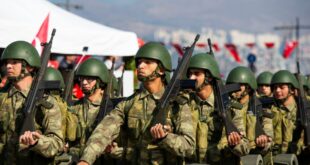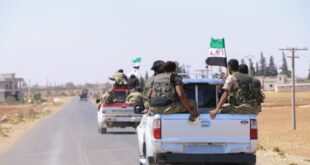It is estimated that about three trillion dollars worth of mineral resources have been extracted from Afghanistan’s soil. Taken from a coal mine in Samanjan Province.
All the mentors in the world are now interested in working with the Taliban. But why? There are probably multiple reasons for this. One of the big reasons is the country’s minerals. The reason for NATO’s incursion into Afghanistan 20 years ago was called “suppression of terrorism”. But US policymakers have also speculated that Afghanistan’s mineral wealth could be seized by defeating the Taliban. The war on the ground did not give them that opportunity. In the new reality, the United States is keen to do that with the Taliban. China and Russia have similar desires. Turkey is coming anew.
Three trillion dollars worth of minerals
It is estimated that the country’s nearly three trillion dollars worth of assets have been extracted underground. With all this business, the country can easily earn billions of dollars a year.
In addition to gold and nickel, Afghanistan has many valuable minerals, including lithium and copper. There are many rare soil elements including scandium, uterium, which are used in making mobile phones, TVs, fiber optics nowadays.
After entering Afghanistan, NATO experts intercepted Russian investigative reports on the country’s mineral resources in the 1980s and 1980s. Together with that, the Pentagon’s high-tech search led to the discovery of huge stockpiles of lithium in Ghazni.
Lithium is mainly used in various military devices from small computer batteries. It is also important for the impending revolution of electric vehicles. It is now a strategic mineral around the world. The BBC also called Afghanistan a “future Saudi Arabia” because of lithium. Bolivian politics is in deep trouble over similar large lithium reserves. There, ousted Evo Morales demanded the establishment of control over lithium for US alcohol in the coup against him. Afghan reserves of lithium are almost equal to Bolivia. Control of Ghazni in the coming days is therefore very important for many.
As US aid dwindles, Afghans will need Russia, China, Pakistan and Iran. These countries are now working to build a “win-win” relationship with the Taliban.
Apart from lithium, copper and other minerals in Afghanistan, opium is also traded as a grade-4 quality heroin component. The production of technology-based methamphetamine-based drugs is also increasing in the country now. All the recent reports in this regard say that the size of the country’s drug economy is now larger than it was 20 years ago. In the future, the outside forces will have to decide with the Taliban on these issues as well. Many unseen powers, Iran and Pakistan, the two gateways to Afghan narcotics, will be at the forefront of these agreements. Afghan drug producers are moving to a new route to Pakistan as the currency depreciates against the Iranian currency. At the same time, it may increase the spread of drugs among Pakistanis.
The CIA’s role in financing Afghan guerrillas during the anti-Soviet war to market heroin to locals along the Pak-Afghan border is a testament to the size of that management during the Taliban’s rule.
Good day in the mining industry
As soon as he sat down to write about the minerals of Afghanistan, the words of the tyrant Khalilzad came to mind. He is the one who signed the US peace agreement with the Taliban. The U.S. diplomat has long been associated with the oil company Unique. He has been a citizen of the United States since 1984.
Being of Pashtun descent, he has been in contact with the Taliban for about 25 years. He took his ministers to the Unique office in Texas before the Taliban ousted him in 2001. The Taliban government did not yet have diplomatic relations with the United States. Khalilzad was primarily responsible for the construction of the 620-mile Pakistan-Turkmenistan gas pipeline (known as the ‘Saint-Gas’ project) over Afghanistan, originally on behalf of Uniqlo. At the time, the Taliban agreed to pay থেকে 50 million to 100 million a year. The project did not move forward in the midst of the ensuing war. Neither the United States nor the Taliban have lost faith in Khalilzad. In 2010, he became a member of the board of RK, another UAE-based oil company. He was a board member of DNO, a Norwegian company working in the same field. DNO was hired in 2004 in the Kurdish region of Iraq. Khalilzad was also the US ambassador to Iraq in 2005-06. War, aggression and the fuel business have always stuck with his resume. If the current “peace deal” succeeds, he could be seen in a more important role in Afghanistan. Or his son.
Alexander Benard, Khalilzad’s son, is a consultant for miners in Central Asia at the behest of his father. Benard is now the MD of Griffon Partner, a company founded by his father. The upcoming Afghanistan is a great opportunity for mining corporates. Benard’s appreciation may increase at this time. At the same time, the country’s air, water and land pollution will also increase at this time.
Copper reserves will make the Taliban an ally of China
As US aid dwindles, Afghans will need Russia, China, Pakistan and Iran. These countries are now working to build a “win-win” relationship with the Taliban.
In the third world, China is more skilled in how to take big projects by the hands of the heads of state. Despite NATO’s 20-year rule in Afghanistan, Messrs. Yank’s largest copper reserve, China’s state-owned company MCC (Metallurgical Corporation of China), was able to lease in a ৩ 3 billion deal in 2016. It was reported at the time that the MCC had paid ৩০ 30 million to Minerals Minister Mohammad Ibrahim Adel in the deal. The transaction was completed in Dubai. Ibrahim Adel was fired after the incident became known.
Corruption does not stop there. Incumbent President Ashraf Ghani has also been accused of bribing a US company called SOS International to gain control of mineral resources in Kunar province.
The mineral sector is a major contributor to Transparency International’s Corruption Perceptions Index, which sank Afghanistan to 175/170 last year. In the midst of the last 20 years of war, the Taliban have also raised an average of আ 2.5 million to স্থানীয় 10 million a year locally from various mining operations. Thus, most of the work in the mining sector has been done by the corporates with the money of government bureaucrats and local armed guerrillas.
The much-talked-about Mess Aank mine in Logar province, 25 miles south of Kabul, is estimated to have about 80 million metric tons of copper. Despite the hasty lease, China has not been able to start extraction in time. The security situation was not conducive. Apart from the huge population that will lose their homes in the mining area, no alternative has yet been developed to rehabilitate them. However, China will not lose this reserve in any way. Half of the global copper demand is now theirs. It is not uncommon for the Taliban to become friends with China.
The country’s Hajizak mine is another area of interest for many countries, as is China’s interest in Mess Yank’s copper deposits. There are huge deposits of iron ore here. The area lies in Bamiyan, 130 kilometers west of Kabul. There are 2.2 billion tons of iron ore here. In 2011, several Indian companies allocated 10 billion to the sector. Like China, they could not work. Maybe not anymore.
The Taliban will not get much for their livelihood except for mineral resources and tourism. International powers are eager to take advantage of this weakness in Afghanistan. The Taliban need to invest in human resource development and infrastructure. And investors will be interested in getting cheap minerals.
China is repeatedly tempted to invest in railways in Afghanistan as soon as Mess Jank’s copper is removed. Pakistan and Russia also have some favorite economic projects in Afghanistan. They are also involved in the tug of war with the Taliban!
48 percent of Afghans are poor, resources must be used
Although rich in mineral resources, Afghanistan is one of the poorest countries in the world. In this country of about 45 million people, 47 percent of the population is still below the poverty line, earning less than ৯ 1.9 a day. There are 3 million Afghan refugees in neighboring countries. When the war is over, they will return to the devastated villages. The country is well ahead in terms of birth rate and unemployment. The future Afghanistan needs to provide food, shelter and jobs for all such people. This country, which is four times larger in size, is now nothing more than a war-torn country. Some of what is meant by infrastructure has not been spared. In addition, 80-90 percent of the citizens are deprived of education. The majority of young people are not trained in anything other than running a gun. A psychological revolution is needed to pull a population from gun culture to paper and pen culture. We need resources for this work.
Kabul is not the center of gravity in the new war
The Taliban will not get much for their livelihood except for mineral resources and tourism. International powers are eager to take advantage of this weakness in Afghanistan. The Taliban need to invest in human resource development and infrastructure. And investors will be interested in getting cheap minerals. In extreme corrupt ways, if necessary. Talks on the ‘St.-Gas’ project may also begin soon. The next challenge for the Taliban leadership is to coordinate this two-pronged approach. In particular, regional tribal leaders need to come to terms with their own armed forces and the Taliban’s local mineral economy.
Conflict in some districts of the country as soon as the US troops take the initiative to return home is a major reason for the imminent onset of the upcoming mineral-occupation-war. From previous experience, the Taliban knows that the next war will not be about Kabul alone. Mineral rich districts will be its center of gravity.
 Geostrategic Media Political Commentary, Analysis, Security, Defense
Geostrategic Media Political Commentary, Analysis, Security, Defense





